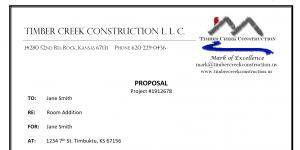Prayer Is How We Communicate with God
Relationships where there is no communication don’t last.
A relationship is two or more people being connected. It’s hard to connect in any meaningful way without communication. Communication is how we let others know what we’re thinking and feeling.
Granted, different people communicate differently, but when there is none…there is no relationship.
Praying is how we build a relationship with God.

This week’s sermon was about Hannah. She was the mother of Samuel and one of the wives of Elkanah. She had not had any children yet, and Peninnah, Elkanah’s other wife, had children.
Peninnah kept throwing this fact in Hannah’s face. (1 Samuel 1:6)
Hannah prayed long and hard for a child. She vowed to dedicate him to God’s service. God answered her prayer, and she gave birth to Samuel. She brought him to the temple as a young boy and left him with Eli the priest.
In her gratefulness, Hannah prayed a prayer of thanksgiving to God. (1 Samuel 2:1-11)
Three observations from the prayer:
- We need to share our hearts with the Lord. It doesn’t matter if our requests seem insignificant to us. We need to share these things more than once. Hannah shared this with God for years. (1 Samuel 1:7)
- Sometimes the answer to our prayer may not be what we want. Maybe what we’re asking for comes with consequences. Imagine what it would be like after waiting years for a child to give them up.
- We need to praise and thank God for answering our prayer. God knows better than we do. This is why we should remember that God knows more than we do. Hannah had more children (1 Samuel 2:19-21), and Samuel became a great leader. (1 Samuel 3:15-21)
Remembering to take the time to thank God is important.

This is the hard one for me. It’s not that I’m not grateful, because I am. It’s just that I have so many to-do lists, that I move on to the next thing rather than pausing and thanking God.
It’s a lot like taking pictures of construction projects. I do a great job of taking pictures before we start and in the early stages. Then, as the project moves forward, I take less and less often forgetting to take completed pictures because I’ve moved on to the next project.
Just like I need to be reminded to take pictures of completed construction projects, I need something to remind me to pause and thank God for answered prayers.
Ebenezer is a male given name in Hebrew that means “stone of help”. There are several instances of the Israelites stacking or standing up stones as reminders of answered prayers.
Ebenezer was the name of the stone that was erected by Samuel to commemorate a victory over the Philistines. (1 Samuel 7:3-12)
This was a reminder to everyone that God had answered their prayer.

As a way of reminding us of answered prayers, Pastor Lisa passed out small colored stones to everyone in the congregation. These are to represent specific prayers.
She placed a clear glass cylinder at the front of the sanctuary for us to drop our stones in when prayers are answered. We can then get another stone for another prayer.
I’ve decided to carry my stone with me and place it on my desk during the day, set it by my phone in the evening and put it by the bed at night. This is to be a constant reminder of my prayer. Then, when this prayer is answered, I’ll put it in the cylinder and get another stone.
Stacking up stones in this cylinder is a great reminder of God answering our prayers.














 Cost overruns – You’ve saved and/or borrowed the money you predict you’ll need to do the upcoming construction project. You get an estimate of what it’s going to cost. Sure, it’s more than you expected, but that’s alright it will be worth it in the end, right. Then you get the final bill and it’s a lot more than expected. Now what? Where are you going to find the additional money?
Cost overruns – You’ve saved and/or borrowed the money you predict you’ll need to do the upcoming construction project. You get an estimate of what it’s going to cost. Sure, it’s more than you expected, but that’s alright it will be worth it in the end, right. Then you get the final bill and it’s a lot more than expected. Now what? Where are you going to find the additional money?











 This core value points out that good communication is twice as much about listening. This makes perfect sense why God gave us two ears and one mouth. I have accepted the fact that I like to talk and do quite a lot of it. I believe that
This core value points out that good communication is twice as much about listening. This makes perfect sense why God gave us two ears and one mouth. I have accepted the fact that I like to talk and do quite a lot of it. I believe that 



 I was involved in a situation this week that is a good example of what can happen when there is little or no communication. I was in small claims court as a witness in a double law suit between a building contractor and their customer. The contractor sued for an unpaid balance for work performed. The customer counter-sued for inadequate and poor-quality workmanship. Both parties had legitimate claims and neither party won. When everything was over they both dropped their suits. What could have, no should have, been an enjoyable and rewarding experience for both, ended as a losing situation for everyone involved. This whole mess could have been avoided had they started communicating in the beginning. There was no written agreement of any kind, just a verbal agreement with an hourly rate. This left too many unanswered questions and assumptions.
I was involved in a situation this week that is a good example of what can happen when there is little or no communication. I was in small claims court as a witness in a double law suit between a building contractor and their customer. The contractor sued for an unpaid balance for work performed. The customer counter-sued for inadequate and poor-quality workmanship. Both parties had legitimate claims and neither party won. When everything was over they both dropped their suits. What could have, no should have, been an enjoyable and rewarding experience for both, ended as a losing situation for everyone involved. This whole mess could have been avoided had they started communicating in the beginning. There was no written agreement of any kind, just a verbal agreement with an hourly rate. This left too many unanswered questions and assumptions.